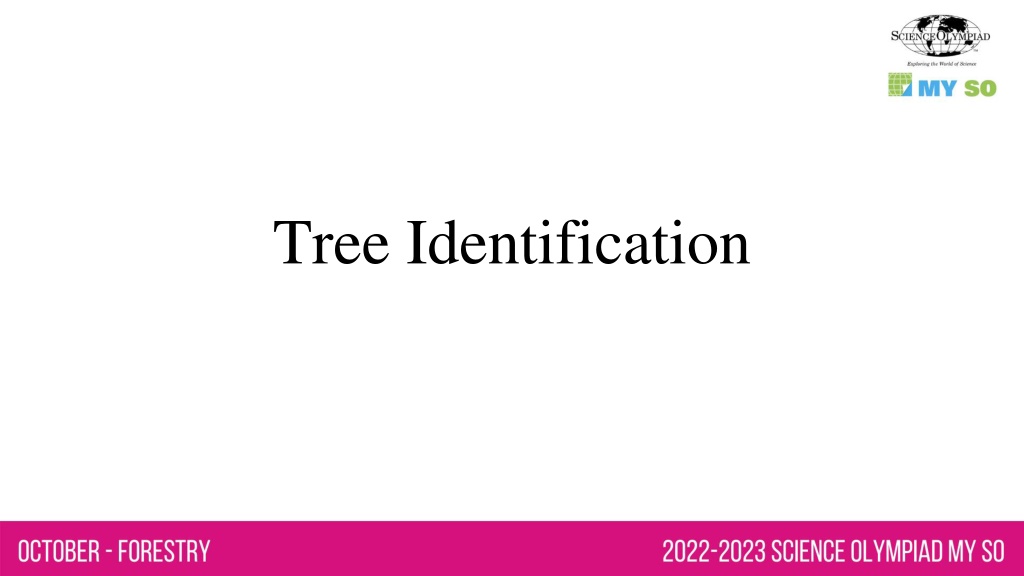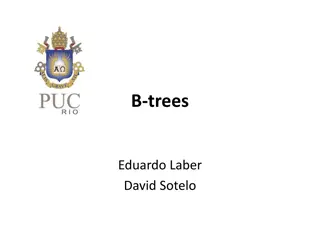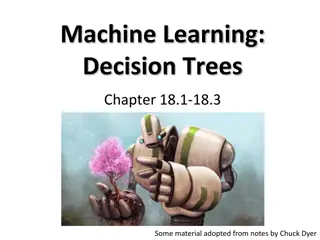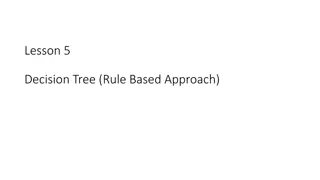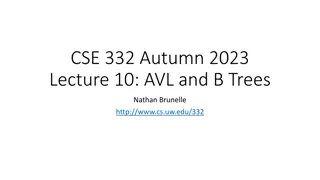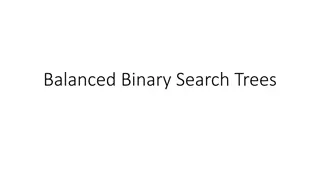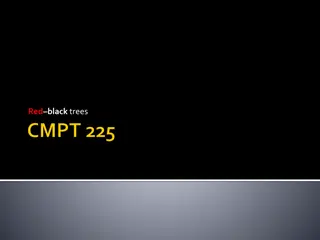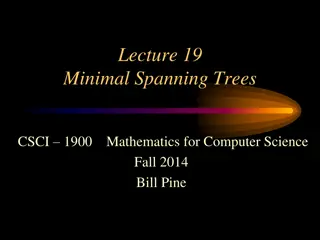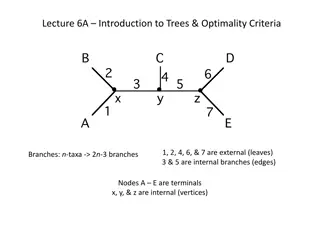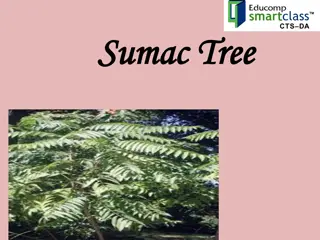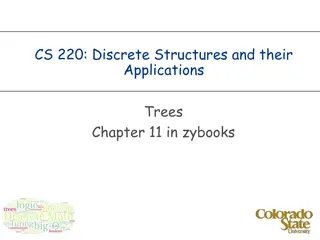Understanding Trees: Identification, Characteristics, and Types
Explore the world of trees through tree identification, forest ecosystems, dendrology, and the distinguishing features of trees and shrubs. Learn about conifers vs. deciduous trees, the defining attributes of conifers, examples of conifer species, and the characteristics of conifer leaves and needles.
Download Presentation

Please find below an Image/Link to download the presentation.
The content on the website is provided AS IS for your information and personal use only. It may not be sold, licensed, or shared on other websites without obtaining consent from the author. Download presentation by click this link. If you encounter any issues during the download, it is possible that the publisher has removed the file from their server.
E N D
Presentation Transcript
Forested The definition of forested (land that is forested or has trees growing on it): to be classified as forested (forestland) the area must be at least one acre and contain at least 10% tree cover.
Dendrology Dendro- from the Greek word meaning tree -ology meaning the study of Dendrology is the study of trees and includes taxonomy, identification, silivical characteristics, ranges, morphology, and ecology
What makes a tree a tree? Heights at least 4.5 meters (about 15 feet) Single dominant woody stem (trunk or bole) Capable of diameter growth Perennial plant (present at all seasons of the year)
What makes a shrub a shrub? Heights under 4.5 meters (less than 15 feet) Multi-stemmed Capable of diameter growth Perennial plant
Tree Identification By observing leaves
Characteristics of Conifers Needle shaped leaves Seeds that develop inside cones Evergreen green year round Gymnosperm, conifer, softwood Examples: pine, spruce, hemlock, fir
Examples of conifers Balsam fir Red pine Douglas fir Fraser fir Scotch pine White pine
Conifer leaves Scale like Needle like
Conifer needles Clusters Singles
Deciduous Tree Characteristics Broad flat leaves Lose all leaves each year in the fall Angiosperm (flowering plants), broadleaf, hardwood Examples: oak, maple, beech, aspen, ash
Deciduous examples Red oak Elm Honey locust Red maple Beech Crimson king WhiteBirch Black locust
Leaf characteristics-deciduous Leaf arrangement: whorl, alternate, opposite Leaf type: simple or compound Leaf edge: entire (smooth), lobed (projection), toothed (serrated) Leaf texture: hairy, waxy, rough, smooth, thick, thin, etc. Leaf shape: various
Leaf Arrangement alternate opposite whorl
Leaf Type Simple vs. Compound
Simple Compound Only one leaf blade Joined by its stalk to the woody stem Examples: maple, oak, aspen, beech Made up of several leaflets Leaflets are joined to a midrib that is not woody Examples: ash, walnut, sumac
Leaf Edge Lobed , smooth, toothed?
More characteristics to ID trees Bark Twigs Flowers Fruits/Seeds Cones Overall shape
Bark Color Texture Furrows Age Thorns
Twig clues Leaf scars aka buds are the places where the leaves used to be attached Size color and shape of buds also useful to ID trees
Flower clues Shape Color Texture Size
Leaf Observations Deciduous Conifer Leaf arrangement: Alternate, opposite, whorl Leaf type: Simple, compound Leaf edge: Entire, lobed, toothed Needles or scales Needle attachment: Single, clusters
